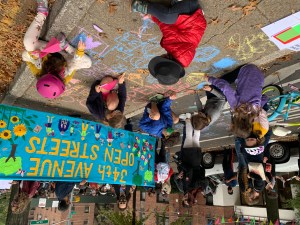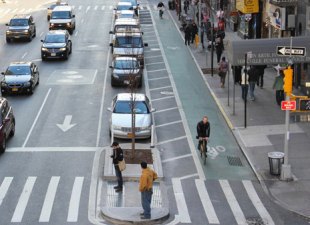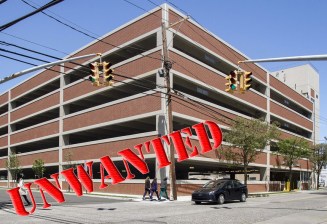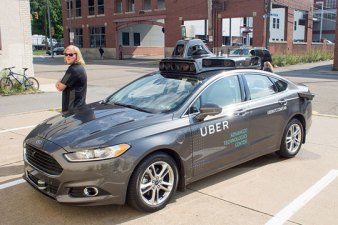Poll Finds Majority of New Yorkers Favor Trading Parking Spots for Safer Streets
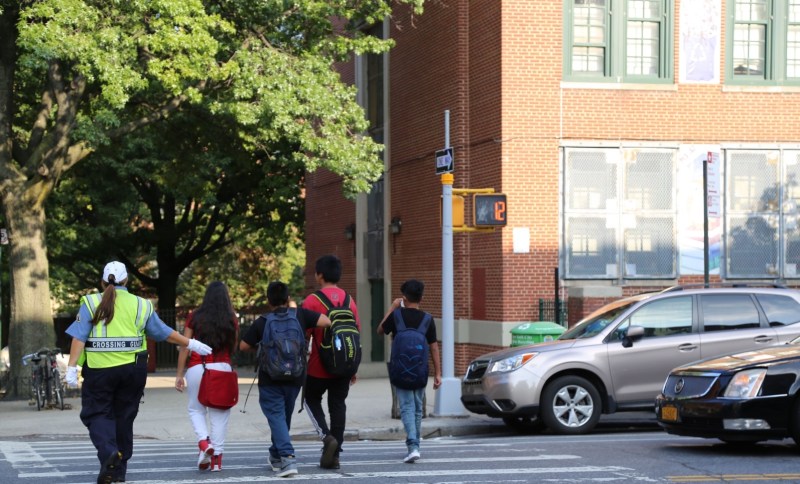
A majority of New Yorkers want the city to make streets safer for kids to bike and walk — even if it makes driving harder or removes parking, according to a newly-released survey that showed strong support for devoting street space to people, and not cars.
The poll by Data for Progress and Open Plans found more than two-thirds of respondents agreed the city should prioritize pedestrian safety over driver convenience — while nearly six in 10 supported doing so if it requires removing parking, adding congestion, or even closing down streets.
“It shows that the city should stop treating this like it’s some kind of fringe issue and should start getting these kinds of things done,” OpenPlans Executive Director Sara Lind told Streetsblog.
Sixteen New Yorkers under the age of 18 were killed in traffic crashes last year — the highest number since former Mayor Bill de Blasio launched his Vision Zero initiative in 2014, and double the deadly tallies in 2020 and 2018. Three of the youngsters were walking or biking to or from school.
A Streetsblog investigation last year found roads near schools log higher rates of crashes and injuries than an average city street. Improving safety on those roads would make the city “safe for all of us,” Lind said.
Conducted between March 27 and April 2, the survey of 668 likely New York City voters also found:
- 90 percent of New Yorkers believe streets around schools should be designed for children;
- 69 percent support designed streets more for pedestrians and their safety over the movements and storage of cars;
- 67 percent wants trees and parks to replace parking spots;
- 59 percent support transforming streets to make it safer for children to bike to school — even if doing so alters car traffic;
- 58 percent believe the city should redesign curb space to serve more uses than just parking;
- … and 64 percent think trash cans should shift from the sidewalk onto curbside lanes currently occupied by parking.
The results demonstrate the widespread support for Mayor Adams and the Department of Transportation to make street safety upgrades across the Big Apple, Lind said.

The poll found support for many street safety proposals to be generally higher among Blacks and Latinos than among their white counterparts — with 71 percent of Black New Yorkers and 83 percent of Latinos agreeing that streets should be designed more for pedestrians than cars, compared to 61 percent of white respondents.
Previous polls have found most New Yorkers would be willing to pay for a permit to park on the street, which the city does not currently require. But who responded to Data for Progress largely disagreed that the city should charge for use of the curb — with the exception of Manhattanites and people under 45.
Support for street safety largely extended to just four of the five boroughs — with car-centric Staten Island unsurprisingly the exception and Manhattan the most car-unfriendly.
Staten Islanders overwhelmingly opposed several statements offered to poll respondents, including 59 percent who were against making bike commutes to school safer if it means fewer parking spots. Manhattan had the highest support numbers for that proposal with 71 percent, followed by Brooklyn (59 percent), the Bronx (58 percent), and Queens (56 percent).

Polls have consistently shown widespread support for exchanging parking for safety improvements.
A 2021 survey by Transportation Alternatives and Siena College Research Institute found similarly broad support for more bike lanes, bus lanes, crosswalk daylighting, and wider sidewalks. Another questionnaire last month showed three-quarters of New Yorker voters wanted the city to prioritize livable streets over traffic and parking.
The results should bolster the livable streets movement, Lind said. New Yorkers are willing to remove car-centric infrastructure in exchange for more space for the rest of us — even if car owners can be the loudest in the room with politicians and city officials.
“They hear from a small number of very loud people who want to park on the street for free, but a large majority of New Yorkers are not those people,” she said.
“They want to see these improvements and they should start listening to the majority of their constituents who deserve these good projects.”
